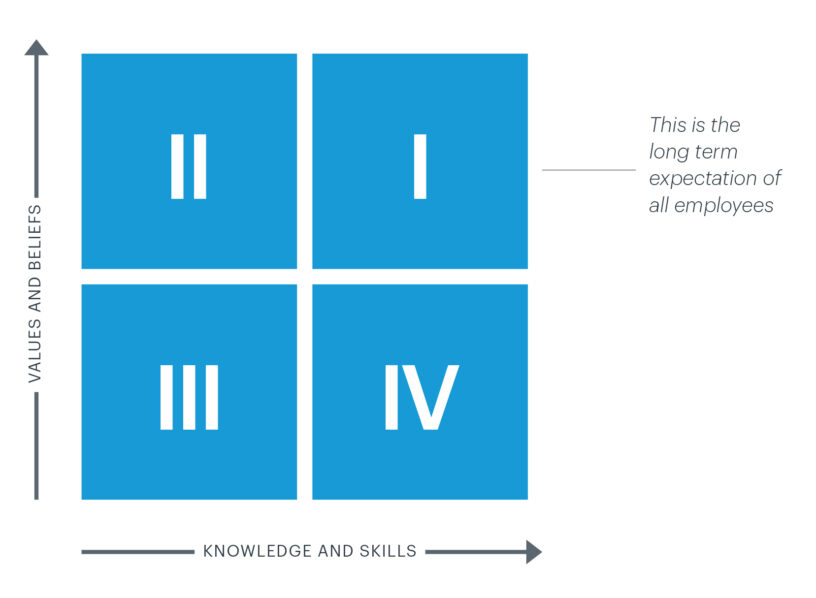This article was originally published by Stand Together Foundation.
In the first session of our recent virtual series on retention, we asked Catalysts to explore the challenges they were facing in their hiring and management processes. Their responses formed a set of shared problem statements and strategies to overcome each obstacle.
In the next session, we took a deep dive into the Virtue and Talents Dimension of Market-Based Management® (MBM). Instead of treating hiring decisions as reactive—urgently filling a practical need—the Virtue and Talents Dimension asks leaders to focus on finding and investing in people who have the right values, beliefs, knowledge, and skills.
Organizations that apply this strategy are able to consistently make employment decisions that result in the right people in the right roles and build a healthy team culture.
We introduced two new mental models to participants in our virtual series to help them apply the Virtue and Talents Dimension and strengthen their own organizational cultures. Keep reading to see how these concepts might shape your approach.
Define, share, and live your culture
The most effective organizations don’t just state their values; they live them out on a daily basis. At Stand Together Foundation, we like to use a three-step framework to think about defining, sharing, and living out culture.
Defining your culture means taking the time to write down your values. What are the expectations for team members to follow those values? Are they recorded in a place that is easily accessible to everyone?
Sharing your culture means that you’ve developed a common understanding of your values across the whole organization. Talking about them is a great first step; it’s also critical to ensure that everyone agrees on what they mean.
Finally, living out your culture means that your values show up in everyday work. Are you using your values to inform promotions, feedback, and accountability? Your values should be integrated into the way team members act, and they should be woven into your operational structure, too.
The Virtue & Talents Matrix
The Virtue and Talents Matrix is a tool to organize employee evaluations according to your organizational culture. It presents values and beliefs on the vertical axis, measuring an individual’s alignment with your values. On the horizontal axis, it measures knowledge and skills to assess an individual’s capacity to create value for your organization.

Over time, the goal is to get every employee in the top-right quadrant: aligned with your values and performing at a high level. There are natural reasons for someone to move outside of that quadrant—when they take on a new role, for example—but employees who are a good fit for your organization should generally be headed in that direction.
The matrix also points to a critical idea: that culture happens one person at a time. You can define your values and set the standard for performance, but your culture depends on each person deciding to live out your values or contradict them. That’s why, when you’re thinking about improving or evolving your culture, it usually helps to start with the individual members of your team.
Learn more about Principle Based Management and how it can help you transform your results.



